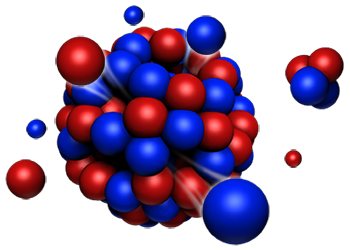Speaker
Description
The Spallation Neutron Source (SNS) at the Oak Ridge National Laboratory produces intense pulses of neutrons for scientific experiments. The neutrons are produced 60 times a second as 0.7 microsecond long pulses of protons traveling at 1.0 GeV and carrying an energy of 23.3 kJ strike target. The elemental mercury target material produces neutrons through spallation reactions. The mercury flows through the system for heat removal. The part where the proton beam interacts with the mercury is called the target module. The target module is a replaceable 316L stainless-steel weldment. The intense loading from these pulses has been the cause of several unplanned replacements of target modules during the life of the facility, which requires stopping neutron production for the entire SNS for approximately two weeks. Such outages have a very negative impact on facility reliability and scientific productivity.
In October 2017, the SNS operated its first target module with intentional helium gas injection into the flowing mercury. This technique, first used in operation at the Materials and Life Facility at J-PARC, reduces the fatigue and cavitation damage from the pulse pressure wave. Since that first target, the SNS has operated four additional targets with varying levels of gas injection, and with three variations in internal target geometry. Each target module was instrumented with a suite of strain gauges to measure the effectiveness of the gas injection. In addition, three of the target modules have had samples removed from the beam entrance area. These samples have been scanned to measure the depth of cavitation erosion on their surfaces.
Gas injection has been a significant leap forward for SNS target reliability. Observations have shown that the mitigating effect of gas injection on target module strain varies spatially as well as with different amounts of injected helium gas. The observations from strain measurements will be presented along with hypotheses for the observed variations and the possible implications on future designs. Data from cavitation erosion measurements will be used to present evidence of the quantitative effect of erosion reduction. Future work will be discussed.

